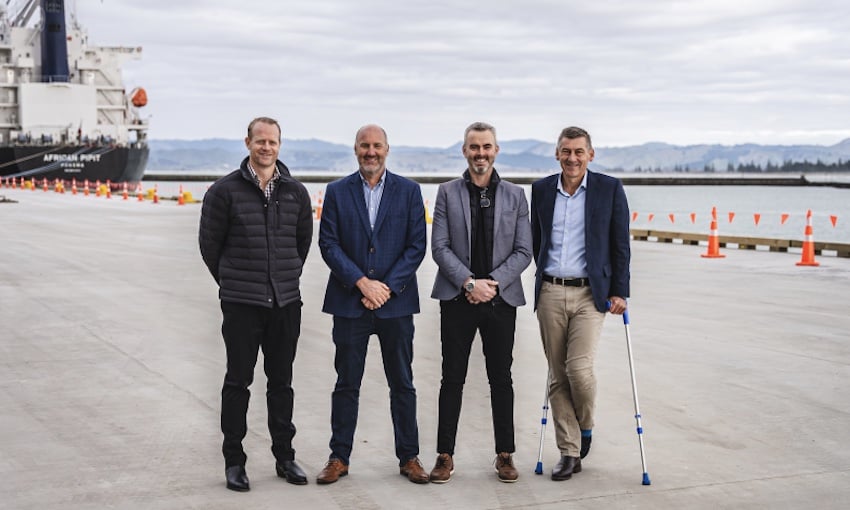EASTLAND Port on New Zealand’s North Island has finished rebuilding Wharf 7 as part of an infrastructure project that aims to bring larger ships into the port.
The 18-month Wharf 7 project involved demolishing the original wharf, which was built in 1967 and was no longer fit for purpose.
Construction specialists McConnell Dowell then built a 255-metre deck-on-pile wharf designed to increase seismic resilience and improve operational longevity.
Eastland Port general manager infrastructure and development Marty Bayley said the new wharf would play an important role in accommodating larger vessels and would open a range of new trade opportunities for the region.
“A critical requirement of the project was to ensure port export operations were not impeded throughout the entire duration of the project,” he said.
“The meticulous planning and collaboration with our operators to ensure this happened within a very congested site is a testament to the expertise and collaborative efforts of the entire project team.
“The completion of this rebuild marks a new era which will support our region’s growth and prosperity.
“We already have ten boutique sized cruise ships booked into berth on Wharf 7 for this summer.”
Fraser Wyllie, McConnell Dowell’s managing director New Zealand and Pacific, said the designers and client on the Wharf 7 project were able to reduce the project’s carbon footprint by around 9729 tonnes of carbon dioxide equivalent.
“To put that in perspective you would save that many tonnes of carbon emissions if you took 2192 cars off the road for a year,” he said.
“There were challenges along the way including Cyclone Gabrielle but it was co-operation between everyone from supply chain to management to tackle challenges like water shortages that kept the job on track.
“We were even able to finish a section of the wharf deck early and were proud to play a small part in the port’s fantastic regional recovery initiative.”
Mr Bayley said McConnell Dowell had completed the project professionally, on time, within budget and without harm or injuries.
“From the outset of their involvement, McConnell Dowell stood out as they looked beyond concrete and steel,” he said.
“They understood and delivered outcomes needed not just for this project but our business and customers, cultivating trust and integrity in the process.”
The Wharf 7 project was the first major activity of stage one of Eastland Port’s Twin Berth project.
Once the Twin Berth project is finished, two ships of up to 200 metres long will be able to berth at once, opening possibilities for large shipping container vessels to and from the region.





